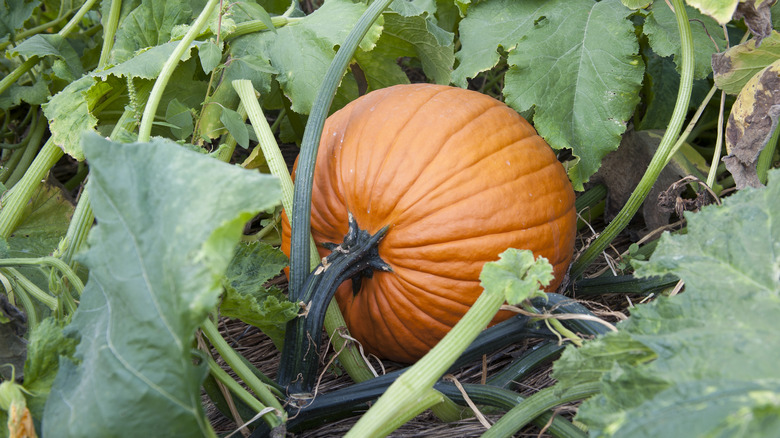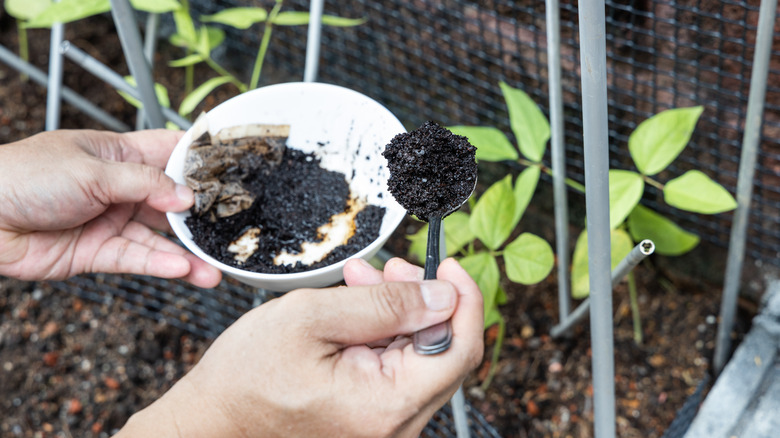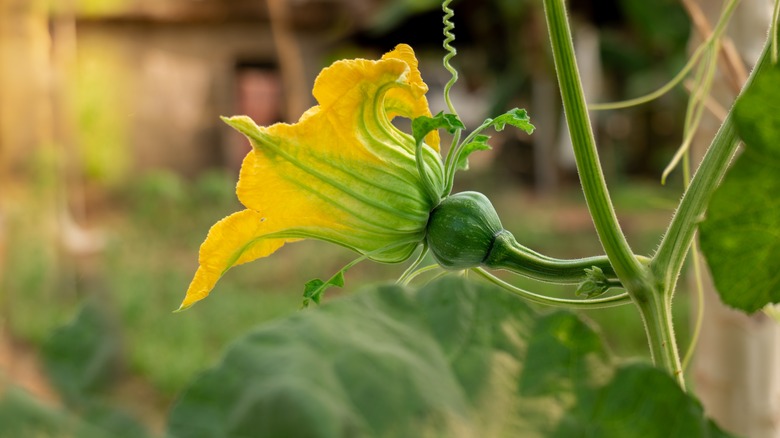Why Do People Use Coffee Grounds When Growing Pumpkins & Should You Try It?
If you look forward to your morning cup of coffee, you're not alone. An estimated 450 million cups of coffee are consumed every day in the United States, and many home brewers are keeping those leftover grounds out of landfills. There are plenty of unexpected uses for leftover coffee grounds around your home, including in your garden. In particular, some gardeners have taken to amending the soil with leftover coffee grounds around pumpkins because of the high nitrogen content of the grounds and the high nutrient needs of the pumpkin.
Adding coffee grounds as a fertilizer for your pumpkins hasn't been exclusively or deeply researched, but utilizing them as a nitrogen boost for plants in general is becoming more common. The reason pumpkin growers may want to take up this amendment, besides convenience, is that pumpkin vines love nitrogen. The nutrient specifically promotes leaf and vine growth, and pumpkin plants prefer about 20 to 40 mg/kg of it in the soil during their beginning stages.
Once the baby pumpkins start appearing, gardeners who want larger fruits may want to ease up on adding nitrogen. To get the plant to focus its energy on growing bigger pumpkins, gardeners can cut off the ends of vines to prevent further growth. However, pumpkins are hungry plants that love lots of nutrients all season, so prolonged general use may not be an issue if not too heavy-handed. Too much fertilizer can cause pumpkins to split.
Coffee grounds do have garden benefits
The reasons why you should keep a bowl of coffee grounds out in your kitchen seem to be scientifically sound. While 10% of a coffee bean is made up of nitrogen-rich proteins, the benefits to pumpkins are most likely a by-product. Coffee grounds can feed the microbes in the soil that do the heavy lifting for your plants. Think about the nutrients in the soil as raw ingredients that plants have a hard time digesting. The microbes are the tiny chefs that turn those raw ingredients into a palatable meal of chemicals that the plant roots can gobble up. So not only is the additional nitrogen useful, but coffee grounds also contain the ideal amount of carbon for healthy plants and soil, with an 11:1 carbon-to-nitrogen ratio.
To add a little cherry on top, coffee grounds can actually suppress soil microbes that may cause disease in your plants too. Some experiments suggest that some fungal rots and wilts, such as Fusarium, Pythium, and Sclerotinia, can be suppressed by coffee grounds. A couple of bacterial pathogens that affect people, E. Coli and Staphylococcus, are also on the list of bad microorganisms that your morning brew appears to ward off.
How to use coffee grounds for pumpkins
While there is no direct evidence that coffee grounds are specifically helpful to pumpkins, circumstantial evidence may be enough to persuade you to give it a try. Then, when you get your fruits, you can try these hacks to keep your fall pumpkins fresh! So if your interest is piqued and you're ready for a little home experiment, there are some things to keep in mind.
First, regardless of how effective coffee grounds are at adding nitrogen, they should never be the only amendment used for pumpkins. Add a layer of compost mixed into the soil before you plant your pumpkin. After they are about a foot tall, using a high-nitrogen fertilizer will boost the vine growth, so this may be the ideal time to use the coffee grounds. Then you should switch to adding more phosphorous, which boosts the growth of the roots and fruits, to the soil right when the plant starts flowering.
Second, you should use caution if using coffee grounds as mulch. The fine grounds can compact very tightly together after being watered. So if you add a thick layer, the same way you would add regular mulch, you may end up creating an impermeable surface that water can't move through easily. Instead, using a layer no more than a half-inch thick under regular mulch could be another way to utilize a large number of coffee grounds.


